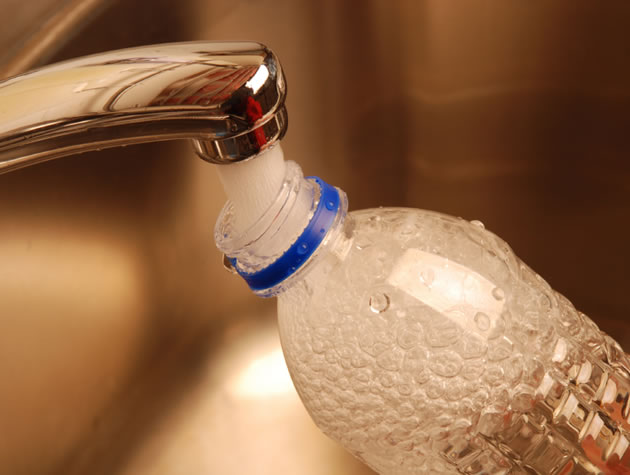
There is no way around it: Water is a necessity of life. It’s pure. It’s clear. It’s unadulterated. Or is it, really? Bottled water marketing portrays an image of being cleaner than tap water, but its quality is actually about the same. Many more eco-conscious people are now switching back to the traditional tap because they have found it to be the safer, greener option. And, when you compare the use of a water filtration system versus bottled water to see which is greener or more reusable, there are many factors to consider.
- Both bottled and tap water come from the same sources, such as lakes, springs and aquifers.
- More than 25% of bottled water comes from municipal supply — with filtration and flavor added.
- Bottled water that is transported across state lines is regulated by the FDA to be bottled under sanitary conditions. When it’s shipped within the same state, the water is only required to follow that particular state’s regulations.
- Bottled water plants are required to be tested for coliform bacteria once a week, while city tap water is tested 100 or more times each month.
- Tap water must meet specific standards for toxic and cancer-causing chemicals, but bottled water companies were exempted of similar requirements by the FDA.
- The manufacturing and distribution of bottled water can consume as much as nearly seven times the amount of water that the bottle actually holds.
- About 72 billion gallons of water are used, more than 17 million barrels of oil are consumed and 2.7 million tons of carbon dioxide is produced in making 900,000 tons of polyethylene terephthalate (PET) water bottles.
- More than 22 million tons of bottled water is shipped between countries each year, consuming roughly 15 million barrels of oil (or enough to generate electricity for 250,000 homes or fuel 100,000 cars for one year).
So, what is the more environmentally conscious choice? When you purchase gallons of bottled drinking water, you can always take the plastic bottles to a recycling facility when you are done with them, but consider all of the resources used in getting that water to your home, then back to a recycling center.
A home water filtration system — which can remove chlorine, carbon, boron, iron, pesticides, volatile organic compounds, benzene, fluoride, bacteria, viruses, parasites and other harmful chemicals and minerals found in tap water — would use up fewer resources because all you would need to purchase is a replacement filter about once every six months, while you keep the housing for the system. We also have the opportunity to recycle used filter cartridges (at present, not all brands are recyclable). Brita has a
program that recycles filters that are used to create recycled tableware for
Preserve Products.
TerraFlo has a similar program to recycle its old filter cartridges by separating and sending parts off to other vendors to be reused. Some Whole Foods stores will take used filters for recycling, but only accept those made by Brita.
You can also check with your respective water filtration company to find out if it has a takeback program for used filters, which is something to consider even before you make your purchase. Recycling water filters is still in its infancy and hopefully more effort will be put into making all brands 100% recyclable.
If you are interested in learning about
what’s in your water, you can get a water quality report on the tap water in your area by going to the
EPA’s website.
 There is no way around it: Water is a necessity of life. It’s pure. It’s clear. It’s unadulterated. Or is it, really? Bottled water marketing portrays an image of being cleaner than tap water, but its quality is actually about the same. Many more eco-conscious people are now switching back to the traditional tap because they have found it to be the safer, greener option. And, when you compare the use of a water filtration system versus bottled water to see which is greener or more reusable, there are many factors to consider.
There is no way around it: Water is a necessity of life. It’s pure. It’s clear. It’s unadulterated. Or is it, really? Bottled water marketing portrays an image of being cleaner than tap water, but its quality is actually about the same. Many more eco-conscious people are now switching back to the traditional tap because they have found it to be the safer, greener option. And, when you compare the use of a water filtration system versus bottled water to see which is greener or more reusable, there are many factors to consider.